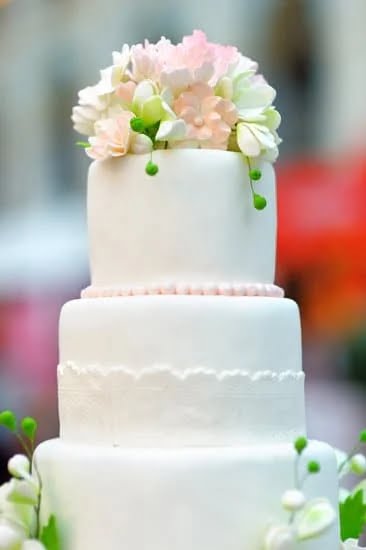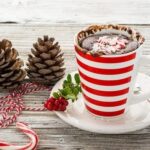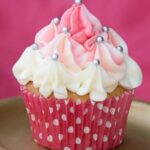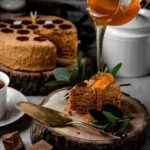Are you ready to learn how to make cake with decoration? Adding decorative elements to a cake can turn a simple dessert into a stunning work of art. Whether you’re a beginner or an experienced baker, mastering the art of cake decoration can take your baking skills to the next level. In this article, we will guide you through everything you need to know about creating beautifully decorated cakes, from essential tools and ingredients to advanced decorating techniques.
Cake decoration is not only about making your cake look visually appealing, but it’s also an opportunity to let your creativity shine. With the right tools and techniques, you can create a masterpiece that not only tastes delicious but also looks incredible. From simple designs to intricate patterns and shapes, there are endless possibilities when it comes to decorating a cake.
In this comprehensive guide, we will walk you through the process of choosing the right cake recipe for decoration, baking and preparing the cake layers, as well as basic and advanced cake decorating techniques. We will also cover edible decorations for cakes, tips and tricks for successful cake decoration, and troubleshooting common issues that may arise during the decorating process. So, get ready to unleash your creativity and learn how to make beautiful cakes with stunning decorations.
Essential Tools and Ingredients for Cake Decoration
When it comes to creating beautifully decorated cakes, having the right tools and ingredients is essential. Whether you are a beginner or an experienced baker, having the necessary supplies will make the cake decoration process much smoother and enjoyable.
Some essential tools for cake decoration include:
- Offset spatula: This tool is crucial for spreading frosting on the cake layers and creating smooth surfaces.
- Piping bags and tips: These are used for creating intricate designs with frosting, such as borders, flowers, and writing.
- Turntable: A rotating cake stand makes it easier to frost and decorate the sides of the cake evenly.
- Bench scraper: This tool is used to smooth out the frosting on the sides of the cake for a clean finish.
As for ingredients, high-quality food coloring gels or powders are essential for achieving vibrant and consistent colors in your decorations. Additionally, using good quality butter, flour, sugar, and flavorings will ensure that your cakes not only look great but taste delicious as well.
In addition to these basic tools and ingredients, there are also specialty items that can take your cake decorations to the next level. These can include edible luster dust for shimmering effects, edible glitter for added sparkle, and fondant for creating intricate 3D decorations.
Having a well-stocked pantry with these essential tools and ingredients will set you up for success when decorating your next cake. By investing in quality supplies, you can feel confident in your ability to create stunning cakes that not only look amazing but taste delicious too.
| Essential Cake Decoration Tools | Essential Cake Decoration Ingredients |
|---|---|
| Offset spatula | High-quality food coloring gels/powders |
| Piping bags and tips | Baking chocolate/cocoa powder |
| Turntable | Butter/shortening |
| Bench scraper | Sugar/flour |
Choosing the Right Cake Recipe for Decoration
Choosing the right cake recipe is crucial when it comes to cake decoration. The texture and consistency of the cake will determine how well it holds up to different decorating techniques and materials. A dense cake, for example, may be better suited for intricate designs and fondant coverings, while a lighter, fluffier cake may work well with simple buttercream decorations.
When selecting a cake recipe for decoration, consider the flavor profile as well. Certain flavors may pair better with specific types of decorations. For example, a rich chocolate cake may complement dark chocolate ganache or brightly colored sprinkles, while a vanilla or almond-flavored cake could be enhanced by delicate floral decorations.
It is also important to take into account any dietary restrictions or preferences when choosing a cake recipe for decoration. There are countless options available for vegan, gluten-free, and other special dietary needs that can still offer delicious results for decorating.
Ultimately, the key to choosing the right cake recipe for decoration is to consider both the structural and flavor aspects of the cake. By taking these factors into consideration, you can ensure that your decorated cake not only looks stunning but also tastes delicious.
Baking and Preparing the Cake Layers
Once you have chosen the right cake recipe for decoration, it’s time to start baking and preparing the cake layers. The first step is to gather all the necessary ingredients and tools, including cake pans, parchment paper, a mixer, measuring cups and spoons, and an oven preheated to the appropriate temperature according to your recipe.
Start by preparing your cake pans. Grease them with butter or cooking spray, then line the bottom with parchment paper to ensure easy removal of the cake layers. Next, prepare the batter according to your chosen recipe. Be sure to measure your ingredients accurately and mix them thoroughly to achieve a smooth and even consistency.
Carefully pour the batter into the prepared cake pans, then place them in the preheated oven. Bake according to your recipe’s instructions, being mindful not to overbake or underbake.
Once baked, allow the cakes to cool in their pans for about 10 minutes before transferring them onto a wire rack to cool completely. At this point, you can also level off any domed tops of the cakes using a serrated knife or a cake leveler for even layering when it comes time for decorating.
Here is an example of how this information could be put into a HTML table.
| Tools | Ingredients |
|---|---|
| Cake pans | Flour |
| Parchment paper | Sugar |
Basic Cake Decorating Techniques
As you delve into the world of cake decoration, it’s important to first master the basic techniques before moving on to more advanced ones. These foundational skills will provide a strong base for your decorative endeavors and allow you to create beautiful, visually appealing cakes. Here are some basic cake decorating techniques that every aspiring baker should know:
Basic Cake Decorating Techniques
- Crumb Coating: Before applying frosting or fondant, it’s essential to crumb coat your cake. This involves applying a thin layer of frosting to seal in any crumbs, creating a smooth surface for further decoration.
- Piping: Piping is a versatile technique that allows you to create various designs using a piping bag and different tips. Practice piping borders, swirls, rosettes, and other simple patterns to add detail to your cakes.
- Buttercream Flowers: Learning how to make buttercream flowers can elevate your cake decoration skills. With just a few piping techniques, you can create beautiful blossoms such as roses, daisies, and sunflowers.
Mastering these basic cake decorating techniques will set the stage for more intricate designs and styles. By understanding the foundation of cake decoration, you’ll be better equipped to tackle more advanced methods with confidence and skill.
Advanced Cake Decorating Techniques
Using Fondant
One advanced cake decorating technique that can take your cake to the next level is using fondant. Fondant is a versatile and pliable sugar paste that can be rolled out and draped over cakes for a smooth, polished look. To use fondant, you will need a few essential tools such as a fondant roller, smoother, and cornstarch for dusting.
Start by kneading the fondant until it’s soft and pliable, then roll it out into a thin layer. Carefully drape the fondant over your cake and use the smoother to remove any air bubbles and create a seamless finish.
Layering and Stacking Techniques
Creating multi-layered cakes with intricate designs requires skillful layering and stacking techniques. To achieve this, it’s important to have an even cake base to work with. Level each cake layer with a serrated knife or cake leveler before stacking them together with layers of frosting in between. For taller, more impressive cakes, consider using dowel rods or cake supports to provide extra stability.
Piping and Filigree Designs
Piping intricate designs onto cakes is another advanced technique that can elevate your cake decoration skills. With just a piping bag fitted with different tips, you can create beautiful borders, intricate lace patterns, or delicate filigree designs on your cakes. Practice different piping techniques such as royal icing filigree or buttercream flowers to add stunning details to your cakes.
These advanced techniques may require practice and patience, but they can result in breathtakingly beautiful decorated cakes that are sure to impress. No matter which technique you choose to try, remember that practice makes perfect when it comes to advanced cake decoration.
Edible Decorations for Cakes
Using Fresh Fruit
Fresh fruit is a popular and visually stunning way to decorate cakes. Berries, sliced kiwi, mango, and even edible flowers can add a burst of color and freshness to your cake. When using fresh fruit as decorations, it’s important to prepare them properly to ensure they stay fresh and vibrant on the cake. Consider brushing a simple syrup over the fruit or dusting them with powdered sugar to enhance their appearance.
Chocolate Garnishes
Chocolate can be used in a variety of forms to decorate cakes, from delicate chocolate curls and shavings to intricate chocolate designs. To make chocolate curls or shavings, use a vegetable peeler on a block of good quality chocolate that has been slightly warmed.
For more complex designs, melted chocolate can be piped onto parchment paper and then transferred onto the cake once set. Some bakers also prefer using chocolate molds to create specific shapes and figures that can be placed on top of the cake.
Fondant Creations
Fondant is a versatile and pliable icing that can be shaped into various decorative elements for cakes. From 3D figures to delicate ribbons and bows, fondant allows for endless creativity in cake decoration. To work with fondant effectively, ensure that your work surface is lightly dusted with powdered sugar or cornstarch to prevent sticking. Additionally, keep your hands clean and dry when handling fondant as moisture can cause it to become sticky and difficult to work with.
Including edible decorations on your cakes not only adds visual appeal but also provides an extra layer of flavor and texture for your guests to enjoy. By incorporating these edible decorations into your cake decorating repertoire, you can elevate your creations and impress everyone who tastes them.
Tips and Tricks for Successful Cake Decoration
Now that you have mastered the basic and advanced techniques for cake decoration, it’s time to explore some tips and tricks to ensure a successful and stunning result. These tips will help elevate your cake decorating skills and take your creations to the next level.
Firstly, always make sure to use the right tools for the job. Investing in quality piping bags, tips, offset spatulas, and turntables can make a world of difference in achieving professional-looking decorations. Additionally, having a good quality cake stand or display platter can help showcase your beautifully decorated cake.
Another important tip is to properly prepare your workspace before you start decorating. Ensure that your work surface is clean and that you have all of your tools and decorations within arm’s reach. This will prevent any unnecessary stress or interruptions while you are in the midst of decorating.
When it comes to creating vibrant colors for your cake decorations, using gel food coloring is the way to go. Gel food coloring provides more intense colors without altering the consistency of your icing like liquid food coloring does. It is also important to allow enough time for your decorations to set before serving the cake, especially if you are working with royal icing or fondant.
By following these tips and incorporating them into your cake decorating process, you will be well on your way to creating stunning cakes that not only look beautiful but taste delicious as well. With practice and dedication, you will continue to improve and develop your own unique style when it comes to how to make cake with decoration.
Troubleshooting Common Cake Decoration Issues
Decorating a cake can be a fun and creative process, but it’s not without its challenges. From uneven frosting to crumbling layers, there are common issues that can arise when decorating a cake. Here are some tips for troubleshooting these common cake decoration issues:
- Crumbly or Dry Cake Layers
- Uneven Frosting
- Fondant Rips or Tears
If you find that your cake layers are crumbly or dry, it could be due to overbaking or using too much flour in the recipe. To prevent this issue, make sure to carefully follow the recipe and keep an eye on your cake as it bakes. Additionally, you can brush each layer with simple syrup before frosting to add moisture.
Uneven frosting can be caused by not properly leveling your cake layers before assembling them. To fix this issue, use a long serrated knife or cake leveler to trim any unevenness from the tops of the layers. You can also use a thin layer of frosting called a crumb coat to even out the surface before applying the final layer of frosting.
Working with fondant can be tricky, and it’s not uncommon for tears or rips to occur when covering a cake with fondant. To prevent this issue, make sure your fondant is rolled out to an even thickness and avoid stretching it too much when draping it over the cake. If tears do happen, you can often gently smooth them out with your fingertips or use a small amount of water to adhere additional pieces of fondant over the tear.
By following these troubleshooting tips, you’ll be better equipped to handle any common cake decoration issues that may arise as you create your beautifully decorated cakes using advanced techniques like edible decorations.
Conclusion
In conclusion, mastering the art of cake decoration can be a rewarding and enjoyable experience for any baker. With the right tools, ingredients, techniques, and a little creativity, you can transform a simple cake into a stunning work of art. Whether you are just starting out or have some experience with cake decoration, it’s important to remember that practice makes perfect. Don’t be afraid to experiment with different designs and decorations to find what works best for you.
It’s also important to keep in mind that while the end result is important, the process of decorating a cake should also be enjoyable. Embrace your creativity and have fun with it. And if you encounter any issues along the way, don’t get discouraged-refer back to our tips and tricks for troubleshooting common cake decoration issues.
Overall, by following the advice in this article and learning from your own experiences, you’ll be well on your way to creating beautifully decorated cakes that will impress friends, family, or customers. So go ahead, grab your tools and ingredients, choose a delicious cake recipe, and start practicing those basic and advanced decorating techniques. Show off your skills and let your beautifully decorated cakes shine.
Frequently Asked Questions
How to Make a Decorated Cake?
Making a decorated cake involves several steps. First, you need to bake the cake and let it cool completely. Then, you can prepare your frosting and decide on a decorating technique. This could be piping, fondant sculpting, or simply using edible decorations.
How Do You Put Decorative Icing on a Cake?
Decorating icing on a cake involves using various techniques such as piping, spreading, or creating designs with different icing tips. You can also use edible markers or stencils to create intricate designs. The key is to have a smooth and even base of frosting before you start decorating.
Can I Bake a Cake and Decorate It the Same Day?
It is possible to bake and decorate a cake on the same day, but it requires careful planning and time management. Ensure that your cake has completely cooled before applying any frosting or decorations to avoid them melting or sliding off.
With proper time management and organization, it is definitely feasible to bake and decorate a cake in the same day.

Welcome to our cake decorating blog! My name is Destiny Flores, and I am the proud owner of a cake decorating business named Cake Karma. Our mission is to provide delicious, beautiful cakes for all occasions. We specialize in creating custom cakes that are tailored specifically to each customer’s individual needs and tastes.





